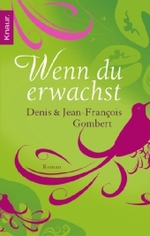基本説明
This cross-linguistic volume innovates research of the acquisition of diminutives in the inflecting-fusional languages such as Lithuanian, Russian, Croatian, Greek, Italian, Spanish, German and Dutch, the agglutinating languages Turkish, Hungarian and Finnish and in introflecting Hebrew.
Full Description
This cross-linguistic volume innovates research of the acquisition of diminutives in the inflecting-fusional languages Lithuanian, Russian, Croatian, Greek, Italian, Spanish, German and Dutch, the agglutinating languages Turkish, Hungarian and Finnish and in the introflecting Hebrew. These languages differ in various aspects relevant for the acquisition of diminutives and the development of pragmatics in early child language. Diminutive formation often tends to be the first pattern of word formation to emerge. The main reason for this seems to lie in the pragmatic functions of endearment, empathy, and sympathy, which make diminutives particularly appropriate for child-centred communication. A main topic of this book is the relation of emergence and early development between diminutives and other categories of word formation and inflection. The greater degree of morphological productivity and transparency, as well as phonological saliency, favors the use of diminutives. In this case diminutives may facilitate the acquisition of inflection.
Contents
1. Introduction (by Savickiene, Ineta); 2. 1. Form and meaning of diminutives in Lithuanian child language (by Savickiene, Ineta); 3. 2. Diminutives in Russian at the early stages of acquisition (by Protassova, Ekaterina); 4. 3. The acquisition of diminutives in Croatian (by Palmovic, Marijan); 5. 4. Diminutives in Greek child language (by Thomadaki, Evangelia); 6. 5. The role of diminutives in the acquisition of Italian morphology (by Noccetti, Sabrina); 7. 6. The acquisition of diminutives in Spanish: a useful device (by Marrero, Victoria); 8. 7. A longitudinal study of the acquisition of diminutives in Dutch (by Souman, Agnita); 9. 8. Diminutives and hypocoristics in Austrian German (AG) (by Korecky-Kroll, Katharina); 10. 9. Acquisition of diminutives in Hungarian (by Bodor, Peter); 11. 10. Diminutives in Finnish child-directed and child speech (by Laalo, Klaus); 12. 11. The (scarcity of) diminutives in Turkish child language (by Ketrez, F. Nihan); 13. 12. Acquiring diminutive structures and meanings in Hebrew: An experimental study (by Hora, Anat); 14. 13. Diminutives provide multiple benefits for language acquisition (by Kempe, Vera); 15. Conclusions (by Savickiene, Ineta); 16. Subject index








